The Moroccan Cauliflower Recipe is a salad with a medley of vibrant colors and dramatic flavors from the carrots, beets, and cauliflower dressed in chermoula. This warm salad with the versatile chermoula dressing is a perfect accompaniment to any meat or seafood entrées!
I am fond of salads both warm and cold. I think that salads are yet another arena for creativity and originality. This Moroccan Cauliflower Recipe has become a part of our regular menu because it is zesty, spicy, sweet, a bit salty, and crispy (around the edges of the veggies). While my cauliflower recipe in the Moroccan style is the star of the show, I have also prepared variations that include roots such as sweet potato, and taro, vegetables such as squash and peppers, beans such as chickpeas.
I have found that roasting veggies for the salads adds brightness to the meal. The addition of chermoula elevates and accentuates that brightness. This makes the warm Moroccan Cauliflower recipe spectacular on a cold day due to the versatility of the chermoula. Usually, carrots and other fresh veggies are added. Here, I have added beets as well. I have modified and adapted the recipe below based on my visits to Morocco and Australia. I think that my version of the Moroccan Cauliflower recipe is alive with flavors.
What is a cauliflower?
One of the most interesting vegetables in the world is the humble cauliflower. It turns out that the cauliflower is the direct result of selective breeding by farmers in the Middle East, especially around Cyprus. Cauliflower is from the species Brassica oleracea originating from the wild cabbage. Surprisingly, the wild cabbage was selectively bred resulting in kale, cabbage, kohlrabi, broccoli, and cauliflower.
As the name suggests, cauliflower is the immature, bloom (curd) of the plant. It is from a compound in Latin for “cabbage” and “flower”. While the earliest references can be found in the works of the Roman Pliny the Elder, the cauliflower is also mentioned in the work of Arab botanists in the 12th and 13th centuries.
Benefits of cauliflower:
While they are difficult to cultivate, requiring particular light, temperature, and soil compositions, they are incredibly nutritious. Cauliflower is a good source of vitamin C, and a single floret contributes 10% of your daily vitamin C requirements. In addition, they are also a great source of vitamin K, B6, potassium, folate, and fiber, as well as protein, thiamine, riboflavin, niacin, and magnesium.
My first introduction to this Moroccan Cauliflower Recipe was not in northern Africa. It was in a small unassuming café atop the Three Sisters in the town of Katoomba in Australia’s Blue Mountains. My husband, who had spent several years in Australia, talks extensively about the abundance of fresh produce there. This unusual warm salad garnished with cranberries sold me. The roasted cauliflower was crispy, but there was a sweet and tender freshness to this dish that was accentuated by the chermoula dressing.
Benefits of other varieties of cauliflower:
While most of us are familiar with the creamy-white cauliflower, would it surprise you that cauliflowers come in other colors?
- Orange which contains the most beta-carotene
- Purple is chock full of anthocyanins, which can help reduce diabetes and inflammation, and has both anticancer and antimicrobial properties that help prevent obesity and promote cardiovascular health.
- Green, which has the most chlorophyll is an antioxidant and is also supposed to help treat skin conditions, reduce body odor, improve blood health, and promote weight loss.
Frequently Asked Questions:
- What is chermoula dressing?
North African food is about bold flavors enlivened with warm, earthy spices. While harissa is probably the most well-known sauce or spice mix, the chermoula is no slouch. It is a common spice mix, but invariably there are many versions. While Morocco is the home of the chermoula, this spicy blend generally includes spices such as coriander, cumin, and fresh chilis. Adding ginger, ground onions, chili, or olive oil can turn this dry rub into a paste or sauce. The variations of this spice mix make it such a versatile and popular dressing. It can even be used as a condiment or as a marinade for meat and seafood.
2. How do I choose and prepare cauliflower?
When looking for a good, clean cauliflower head, please check for the following:
- No spots: Look for cauliflower that does not have black/brown spots on them.
- Same size: Separate the florets into more or less the same size to promote uniform cooking.
- Dry: Pat dry the florets and season with some olive oil and salt before roasting them in the oven for crispy edges. In this Moroccan Cauliflower recipe, I have seasoned the cauliflower with spices before roasting the florets.
- Freshness: Fresh cauliflower must be used and not the frozen ones.
- Cutting: Use a paring knife to core the cauliflower; cut out the florets; trim and cut the florets into sections.
3. What are other methods to cook cauliflower?
- Steam: The veggies can also be steamed, but roasting gives an authentic flavor to this Moroccan Cauliflower recipe.
- Microwave: Microwaving the veggies for a minute or two is a quicker way to make this salad.
- Pan roast: Slow roasting in a pan with olive oil also tastes good.
Please do not boil cauliflowers, as they are particularly susceptible to becoming mush. You can steam them or microwave them, but I love to air fry or pan-roast them with olive or avocado oils.
If you’ve tried this recipe or have questions, I would love to hear from you. Please feel free to share (below) your thoughts, comments, or any questions that you might have. And if you like my recipes, you could subscribe to my mailing list for the latest recipes that will be delivered to your inbox. From my pen to your table, Bon Appetit!
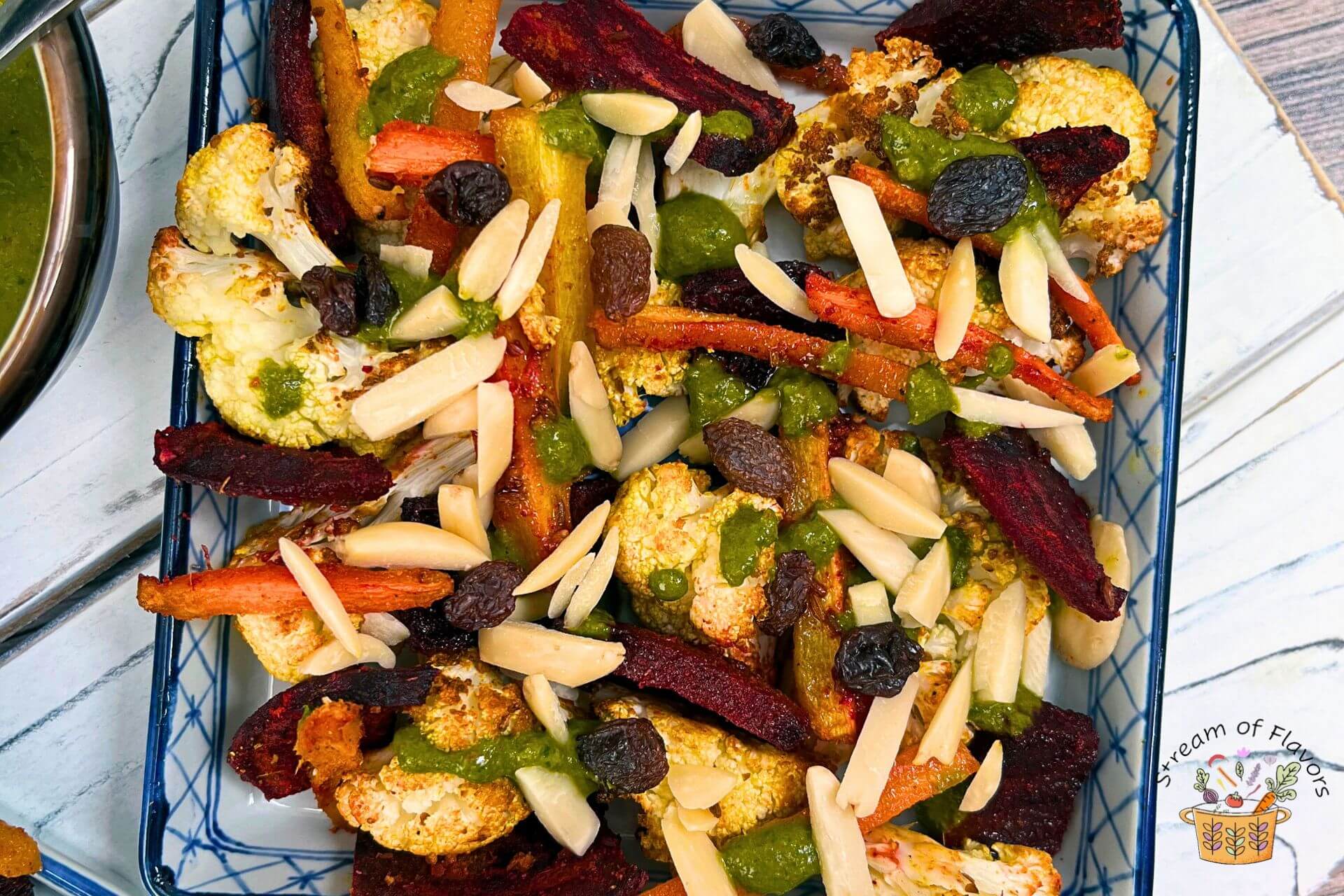
Ingredients:
- Veggies: cauliflower, beet, carrots; vary with squash, sweet potato, taro, or peppers
- Spices: cumin, ground peppercorn, cayenne, ground coriander, turmeric powder
- Chermoula: olive oil, fresh ginger, cilantro (or mint), lemon juice, paprika and chili powder
- Other add-ons: Garbanzo or cooked chickpeas is a common addition and other nuts such as pistachios, walnuts and/or dried cranberries
- Garnish: Roasted pistachios and raisins; alternatively, you could garnish the salad with dried cranberries or pomegranate for color and texture.
Here are the step-by-step instructions on how to make this dish. Please refer to the recipe card below for the measurements.
How to make the Moroccan Cauliflower using my recipe:
- Prepare the ingredients. Peel and slice the beets, julienne-cut the baby carrots, and cut/core the cauliflower florets into small sections.
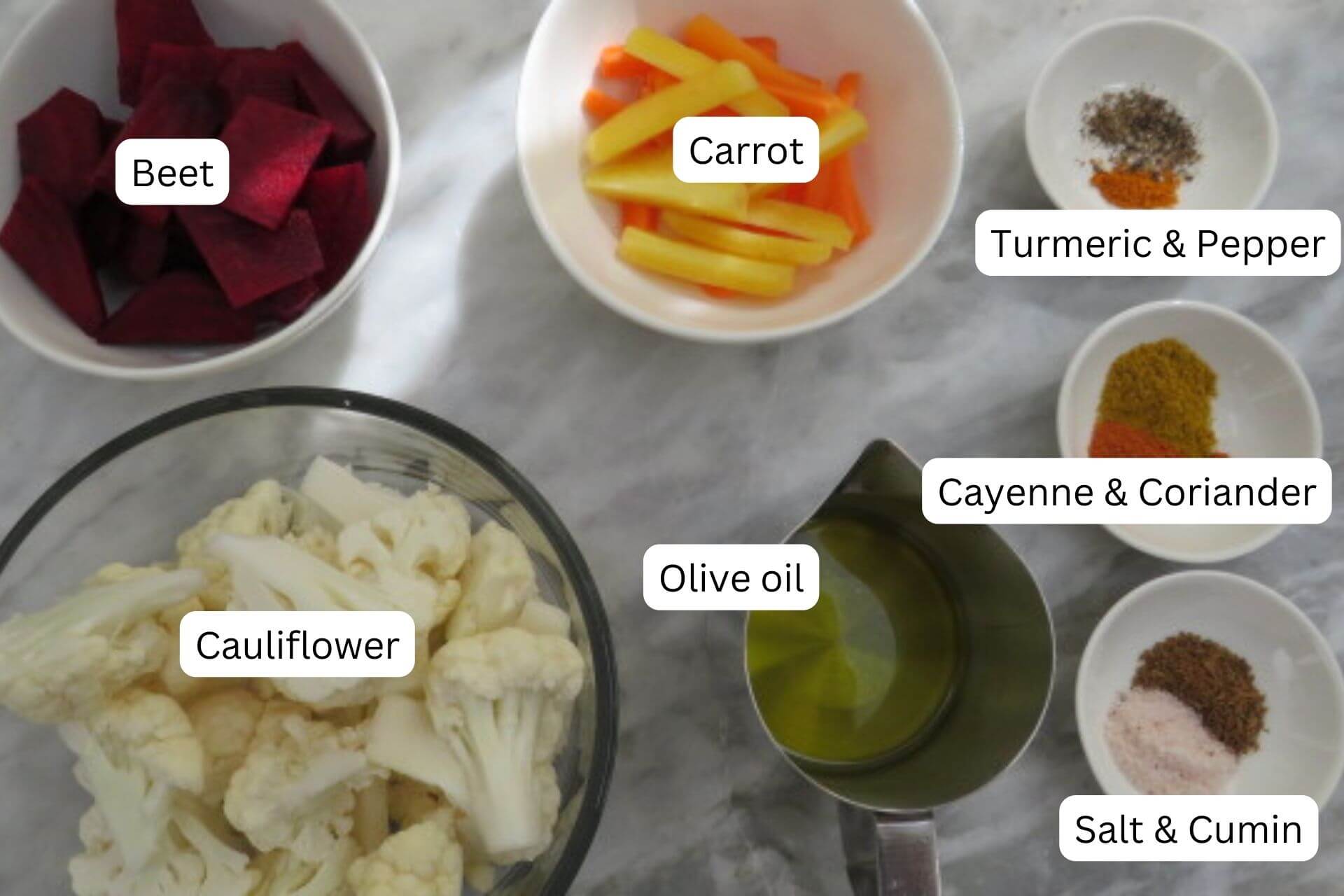
2. Mix the spices and rub on the sliced veggies.
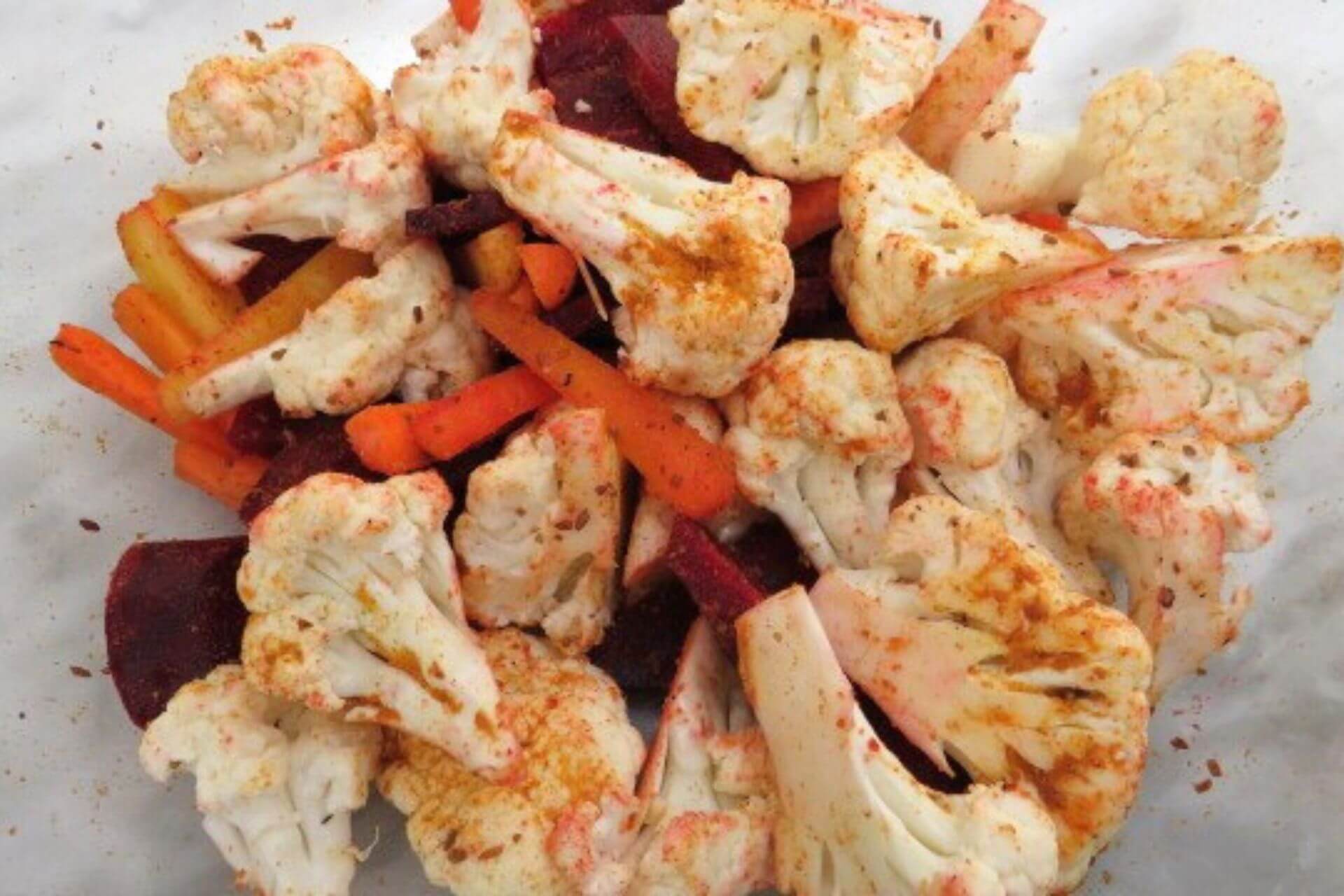
3. Arrange the veggies on a foil-lined tray, drizzle some olive oil, and air fry or bake them at 400 degrees F for 10 minutes.
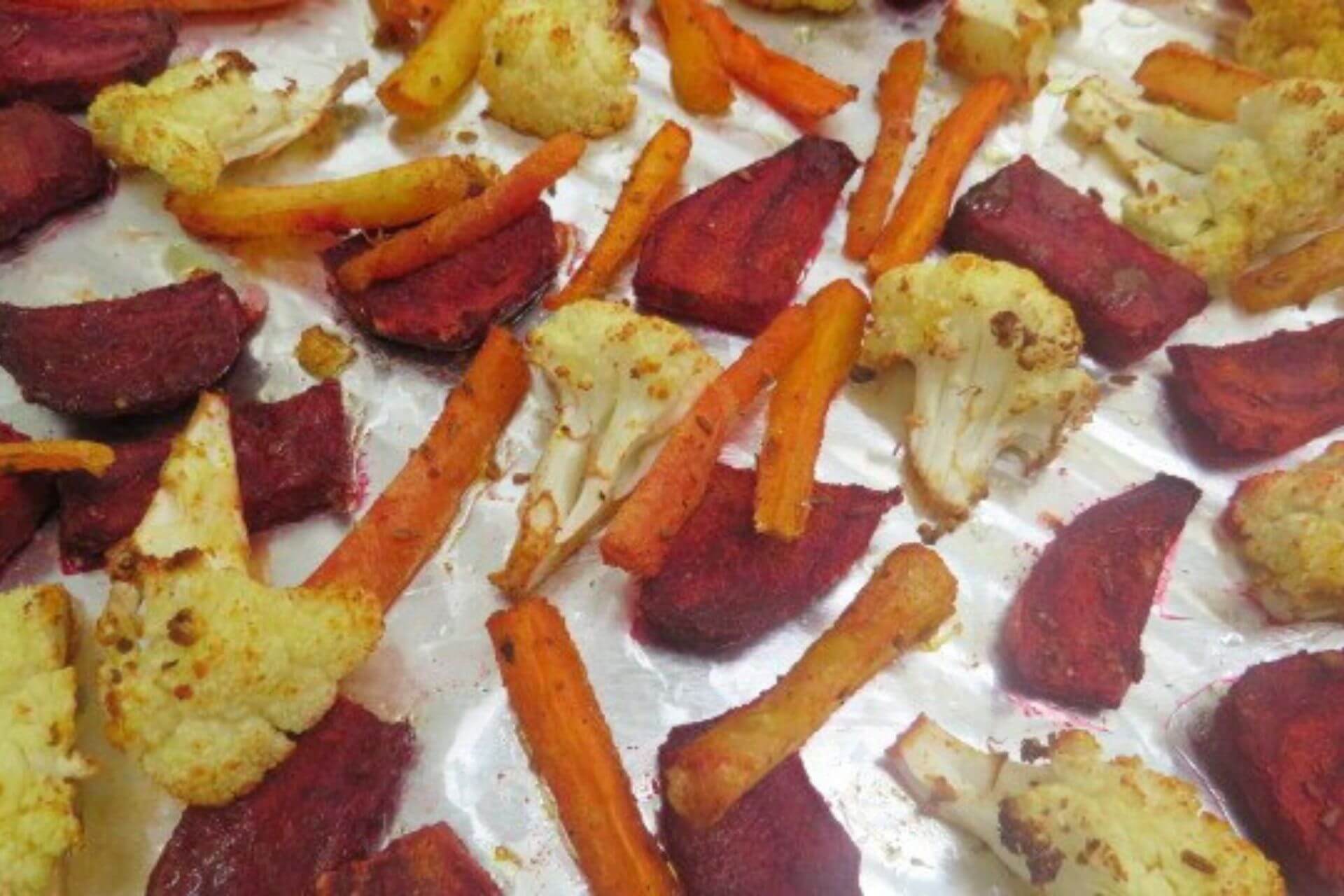
4. Prepare the ingredients for the chermoula dressing. Peel and grate the ginger, chop the cilantro and deseed, and chop the chili.
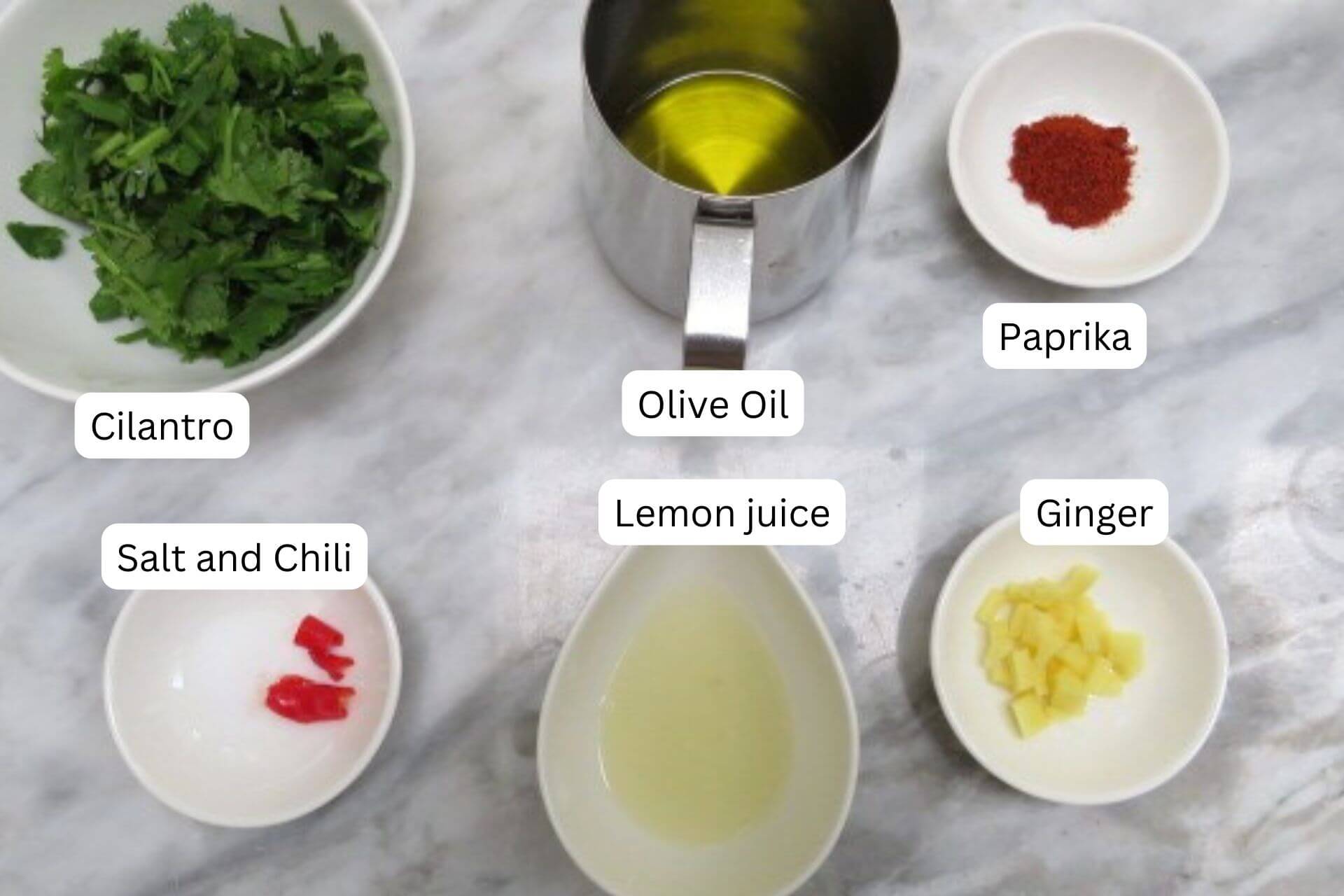
5. Grind the ingredients for the chermoula sauce in a food processor or spice grinder. Scrape down the sides to ensure a nearly smooth mixture and keep aside.
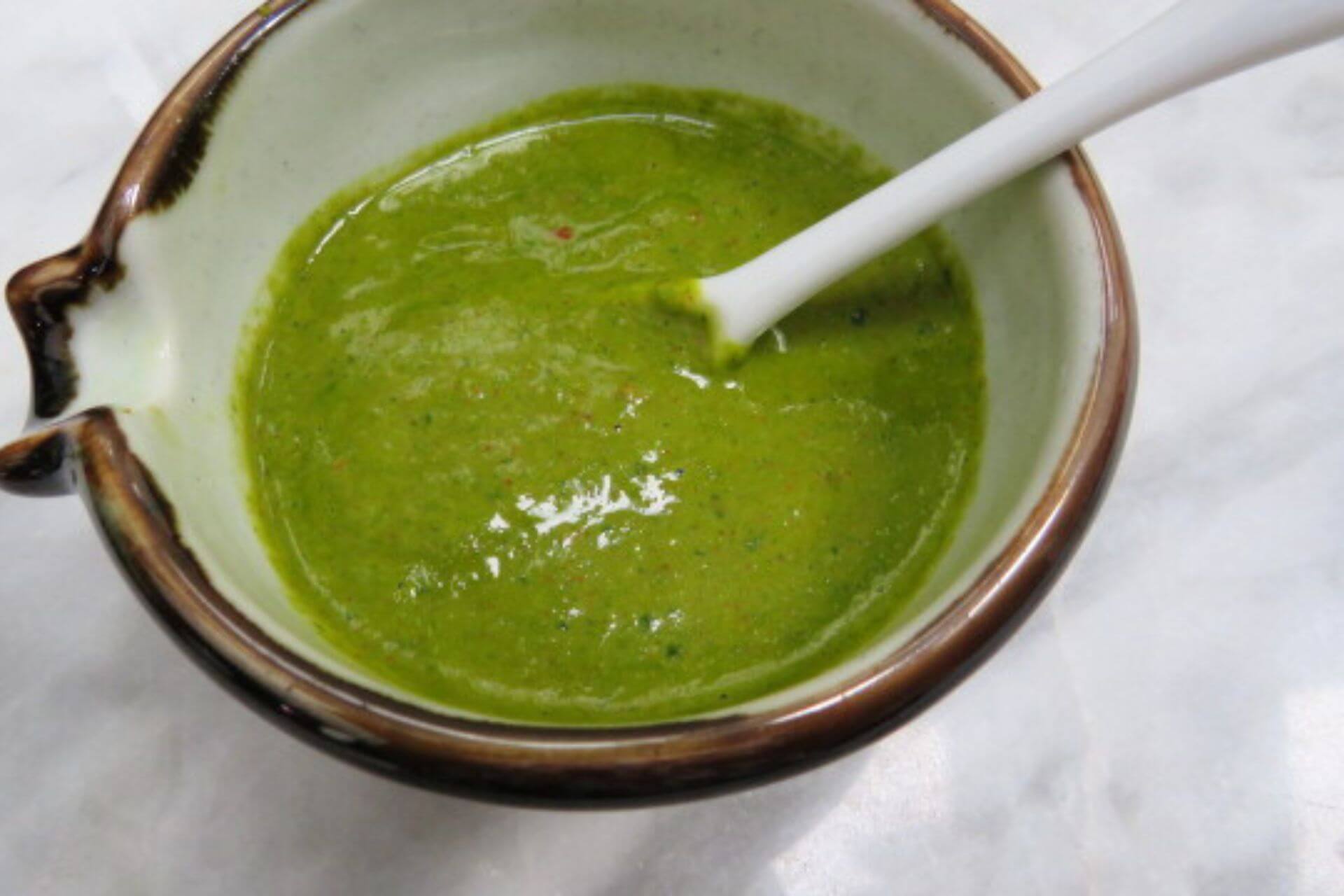
6. Place the roasted veggies in a salad bowl and drizzle some chermoula dressing. Serve this Moroccan Cauliflower dish warm, garnished with raisins and slivered almonds or pistachios.
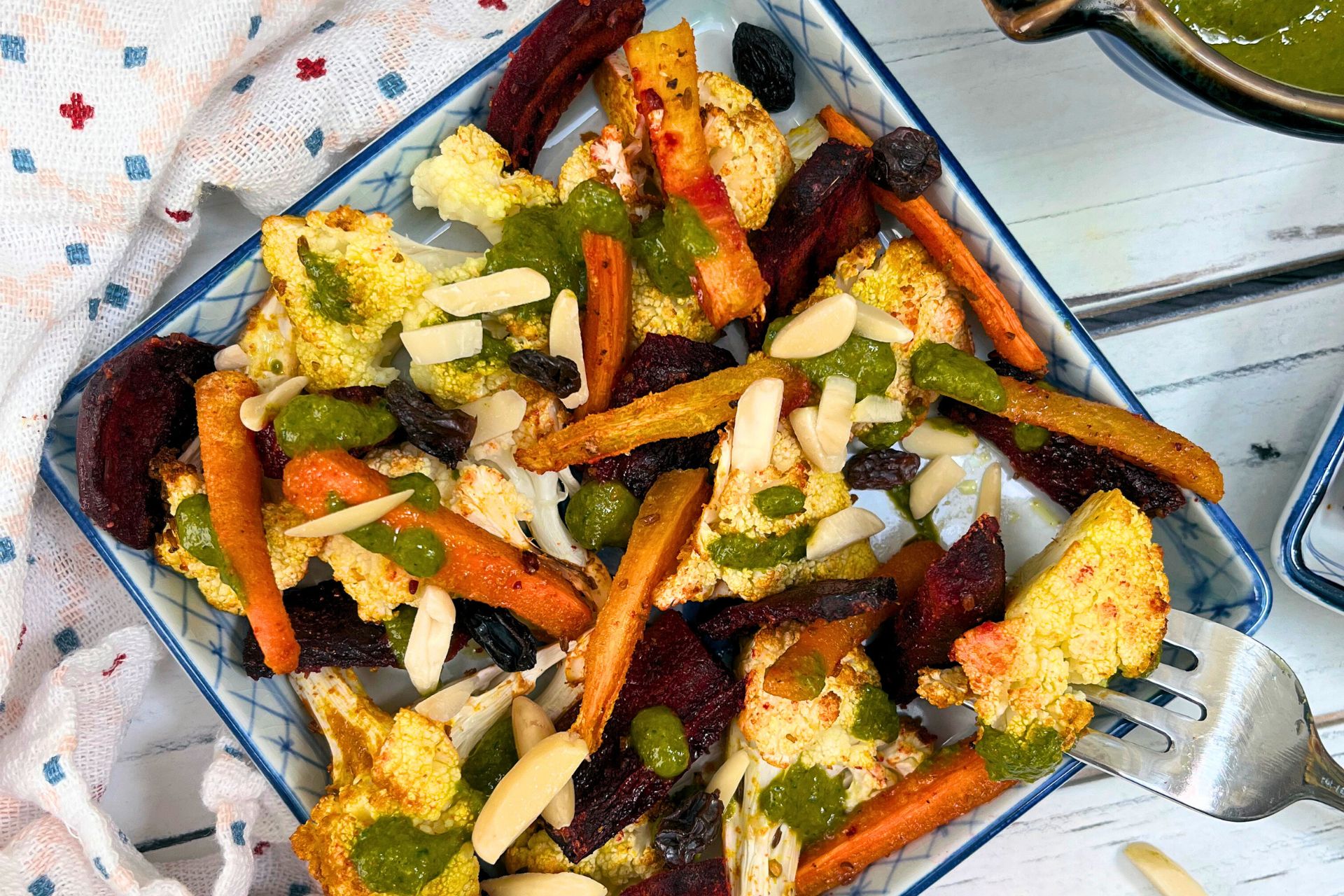
1. The cauliflower florets for the Moroccan Cauliflower recipe must be cut into halves or small sections to promote uniform cooking or roasting.
2. If the cauliflower florets are too big compared to the carrots, then start roasting the cauliflower covered in foil for a few minutes. Then place the carrots and beets and roast them uncovered for a few minutes.
3. Microwaving the cauliflower for too long will overcook it. The cauliflower and carrots must be tender yet firm and crispy. Overcooking the veggies will make this salad mushy.
4. Add olive oil to make the chermoula dressing of a drizzling consistency instead of water.
Serving suggestion:
This Moroccan Cauliflower Recipe with chermoula tastes best when served warm, and it is a perfect accompaniment for these North African dishes:
Storage:
This Moroccan Cauliflower salad using my recipe must be consumed the day of making it. The chermoula can be frozen for a couple of months or refrigerated for a week. If you have leftover salad, refrigerate it for a day and add the dressing right before serving it.
Other cauliflower/beet recipes that you might like:
- Easy Roasted Cauliflower Recipe
- Pasta With Cauliflower and Peas
- Fennel and Beet Salad
- Beetroot Gnocchi Recipe
Moroccan Cauliflower Recipe
Equipment
- Air fryer, spice blender
Ingredients
For the roasted veggies:
- 2½ cup cauliflower sections
- 1 cup gold beet peeled, sliced
- ½ cup baby carrot peeled, sliced
- ¼ tsp Himalayan pink salt
- ½ tsp cayenne powder
- ½ tsp coriander powder
- ½ tsp cumin powder
- ¼ tsp turmeric powder
- ¼ tsp ground black peppercorn
- 2 tsp olive oil extra virgin
For the chermoula dressing:
- 1½ tsp lemon juice
- ½ cup cilantro chopped
- ½ tsp paprika
- 1 Thai chili deseeded
- ½ tsp salt
- ½ tsp ginger peeled, grated
- 1½ tbsp olive oil extra virgin
For the garnish:
- ⅓ cup roasted pistachio
- ⅓ cup raisins
Instructions
- Prepare the ingredients. Peel and slice the beets, julienne-cut the baby carrots and cut/core the cauliflower into small florets.
- Mix the spices and rub on the sliced veggies.
- Arrange the veggies on a foil-lined tray with some olive oil and air fry or bake them at 400 degrees F for 10 minutes.
How to make chermoula dressing:
- Prepare the ingredients. Peel and grate the ginger, chop the cilantro and deseed and chop the chili.
- Grind the ingredients for the chermoula dressing in a food processor or spice grinder. Scrape down the sides to ensure a nearly smooth mixture and keep aside.
- Place the roasted veggies in a salad bowl and drizzle some chermoula dressing. Serve the salad warm garnished with raisins and slivered almonds or roasted pistachios.
Video
Notes
- If the cauliflower florets/sections are big, air fry them for 2-3 minutes and then place the carrots and beets on the foil-lined tray and air fry for 8 minutes.
- You could use mint instead of cilantro to make the chermoula.
Nutrition

This post may contain affiliate links. For more information, please read my Disclaimer.

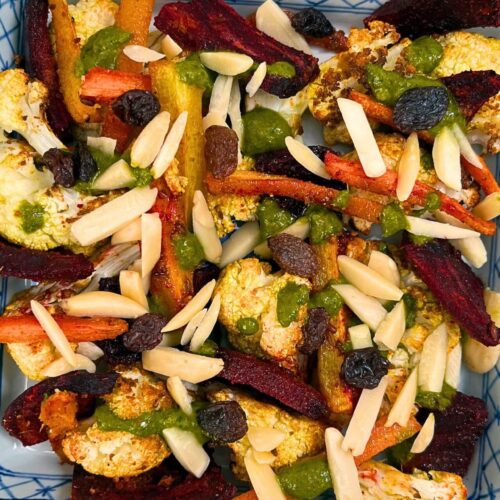
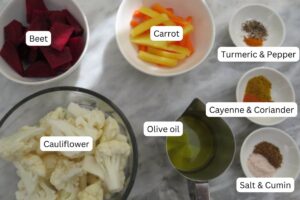
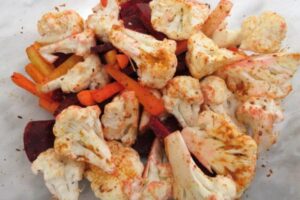
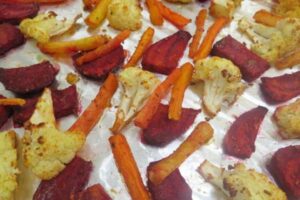
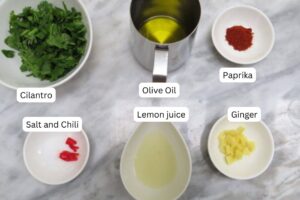
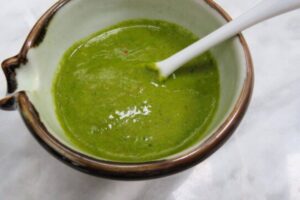





















what a creative salad!
sooo good!!
a quick and easy salad 🙂